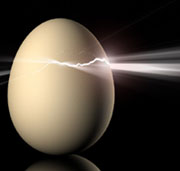Culture Shifts
 Fifteen years ago, as a member of the Electronic Network Association (ENA), I chaired a session at their annual conference. A forerunner of the Electronic Frontier Foundation, the two organizations had many common members.
Fifteen years ago, as a member of the Electronic Network Association (ENA), I chaired a session at their annual conference. A forerunner of the Electronic Frontier Foundation, the two organizations had many common members.
My session included many experts in the field of research, collaboration and human computer interaction. The session also included Carrie Tibbs, a middle school teacher from the San Francisco Bay Area that used National Georgraphic Kids Network to teach science to her students. Kids would do acid rain experiments, and then upload their data to a central server, where the results would be compared against results from other parts of the country.
The program was way cool on many levels, teaching the kids about issues on a global scale - from the importance of taking good measurements, to more secondary lessons in collaboration and global ecology.
Note that this was before the Web!
Freeman Dyson was one of the experts asked to take part in the conference, and one of the few that turned down the opportunity. At the time he remarked that computer networking was not his area of expertise. Since then he has realized the potential impact of the computer network, and has recently (1999) written a book titled The Sun, the Genome, and the Internet, in which he speculates on the combined contribution of those three technologies, and their potential for good.
When I noticed that he would be a keynote speaker at the O'Reilly Open Source Conference this year it was a deja-vodooian opportunity that I simply could not miss.
Tim O'Reilly politely asked me to breakfast before the keynote, along with Mitch Kapor and the Dysons, and in a mad rush, we all tried to figure out how to set the context for the panel.
After a quick run through of all the Dyson books, and how they could each provide metaphors for some current issue in Open Source, I noted that there was a cultural gap in my upbringing (my father was 60 when I was born), and that I admired George for archiving his father's and father's contemporaries' works. George's book, Darwin Among the Machines, will be a classic one day, and in it he summarizes:
" We have mapped, tamed, and dismembered the physical wilderness of our earth. But, at the same time, we have created a digital wilderness whose evolution may embody a collective wisdom greater than our own. No digital universe can ever be compleletly mapped. We have traded one jungle for another, and in this direction lies not fear but hope. For our destiny and sanity as human beings depend on our ability to serve a nature whose intelligence we can glimpse all around us, but never quite comprehend.
Not in wilderness, but 'in Wildness' wrote an often misquoted Henry David Thoreau,' is the preservation of the world'."
This year's O'Reilly Open Source Conference captured some of that "Wildness", and I'm just starting to get my hands around it. I'll write about it more fully elsewhere, but for now, imagine a conference where Brewster Kahle is talking about Pedabyte Open Source Servers, Bdale Garbe is sharing his experience with open source space programs, and David Rumsey (my favorite - see davidrumsey.com) is creating a world in which we can indeed, tour the world through historic maps that contain dimensions in political, social, physical, and cultural axes.
So as the paradigm shifts, and we are all wondering about the next great revolution, or business opportunity, let's adjust or time frame slightly and imagine the potential.
Certainly, politics and economics will lead us in one direction, but while we are all trying to make a living, let's try to keep in mind the infinite other possibilities.
For those trying to understand the paradigm shift in terms of computing, Tim O'Reilly and Nat Torkington's presentation slides "O'Reilly Radar" are the best place to start:
http://conferences.oreillynet.com/pub/w/29/presentations.html
Bob Kaehms - Media Net Link